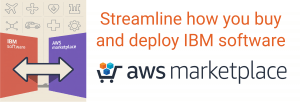Building ELO PUB Templates
This service primarily benefits organizations (or programs) using traditional or waterfall processes and who are new to ELM, or those who are looking to accelerate its successful deployment.
Mastering Project Administration in IBM Engineering Workflow Management (EWM)
This course teaches you how to configure Rational Team Concert project areas and processes so that the core IBM practices for agile development and change and release management can be effectively adopted by the project team. This course begins with a discussion of best practices for project planning. Through a balanced combination of presentation, class discussion, and hands-on exercises, you learn how to configure projects, teams, and iterations configure project and team dashboards; and create queries and reports in Rational Team Concert.
Engineering Lifecycle Management (ELM) Deployment Package – SAFe
This service primarily benefits organizations (or programs) who have scaled or are scaling agile and who are new to ELM, or those who are looking to accelerate its successful deployment in combination with SAFe. The ELM Deployment Package helps our customers using the Scaled Agile Framework accelerate their initial value from their investment in ELM. For those organizations looking to adopt principles Scaled Agile Framework (SAFe), this service includes the application of SAFe templates built to work with IBM’s ELM solutions. The goal of this package is to enable users to begin using a configured system meeting governance and compliance needs that contains their migrated data as quickly as possible. A 321 Gang SPC Solutions Engineer will work to develop each of the following areas for each ELM component tool.
Engineering Lifecycle Management (ELM) Deployment Package – Waterfall
This service primarily benefits organizations (or programs) using traditional or waterfall processes and who are new to ELM, or those who are looking to accelerate its successful deployment.
IBM Engineering Workflow Management (EWM) Administration and Project Management
This course teaches participants how to deploy, configure, and track projects using EWM. It also shows participants how to administer and manage the EWM repository including users, licenses, and project areas.
IBM Engineering Workflow Management for Developers
This course shows developers how to collaborate using these software best practices with EWM. The class discusses task management, source control, build management, and dashboards. Participants learn how to collaborate on source changes, baseline software versions, build those changes, and view progress in dashboards. Participants also learn advanced EWM topics including multi-stream development, custom work types, and supporting reviews.
IBM Engineering Optimization – Publishing Essentials
This course provides an introduction to Rational Publishing Engine. It teaches participants how to generate documents that pull information from various sources, and how to design document templates to support the publishing needs in their company.
IBM Engineering Test Management Essentials
This introductory course is designed to familiarize testing professionals with the basics of IBM Engineering Test Management (ETM). The ETM application assists in creating scripts for manual testing. The course helps you to understand and use test artifacts in ETM.
Engineering Requirements Management DOORS Next Fundamentals
This course teaches how to define, elaborate, organize, and manage textual and graphical requirements and requirements-related information in IBM® Rational® DOORS Next Generation (DOORS NG).
Rational DOORS Next Generation is a key component of the Rational solution for Collaborative Lifecycle Management (CLM).
Engineering Requirements Management DOORS Introduction
This course is for new DOORS users. It introduces basic DOORS concepts and functionality. It includes hands-on exercises that will teach you to create, edit, manipulate, and analyze requirements data in DOORS.


